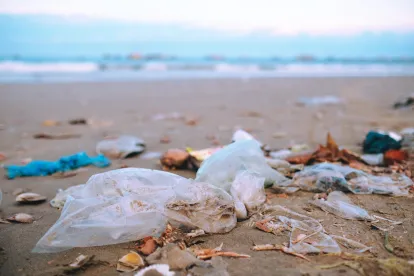The German Federal Ministry of Education and Research (BMBF) project (DaNa4.0) is addressing the question of whether new advanced materials, including nanomaterials, can be harmful to humans and the environment and how humans and the environment come into contact with these materials. DaNa has published an August 2022 research spotlight on a “Three-stage model for the formation of micro- and nanoplastic particles.” The paper, “Degradation of low-density polyethylene to nanoplastic particles by accelerated weathering,” investigates how the process of decomposition due to weathering occurs and what happens to nanoplastic particles. According to DaNa, the starting point for the investigation was plastic pellets in the medium size range of 100-200 micrometers (µm), which were exposed to laboratory weathering by water and solar radiation. Researchers divided the degradation into three main stages: in stage one, the large fragments were smoothed by surface abrasion over a period of up to 17 days, and smaller fragments detached; in stage 2, after a period of at least 58 days, cracks formed on the plastic surface; and in stage 3, the cracks led to the detachment of smaller particles. DaNa states that up to 14,000 nano- and microplastic particles could form from one original particle, and the nanoplastic particles subsequently form larger agglomerates with microplastic particles. According to DaNa, environmental organisms will thus be exposed to nanoplastic and microplastic particles simultaneously. At the same time, nanoplastic particles bound to natural particles may also enter the food chain.
DaNa Publishes Research Spotlight on Three-Stage Model for the Formation of Micro- and Nanoplastic Particles
Thursday, August 4, 2022
Current Public Notices
Published: 28 August, 2025
Published: 25 August, 2025
Published: 25 August, 2025
Published: 25 August, 2025
Published: 25 August, 2025
Published: 22 August, 2025
Published: 20 August, 2025
Published: 20 August, 2025
Published: 18 August, 2025
Published: 18 August, 2025
Published: 14 August, 2025
Published: 12 August, 2025
Published: 11 August, 2025
Published: 8 August, 2025
Published: 18 July, 2025




 />i
/>i
